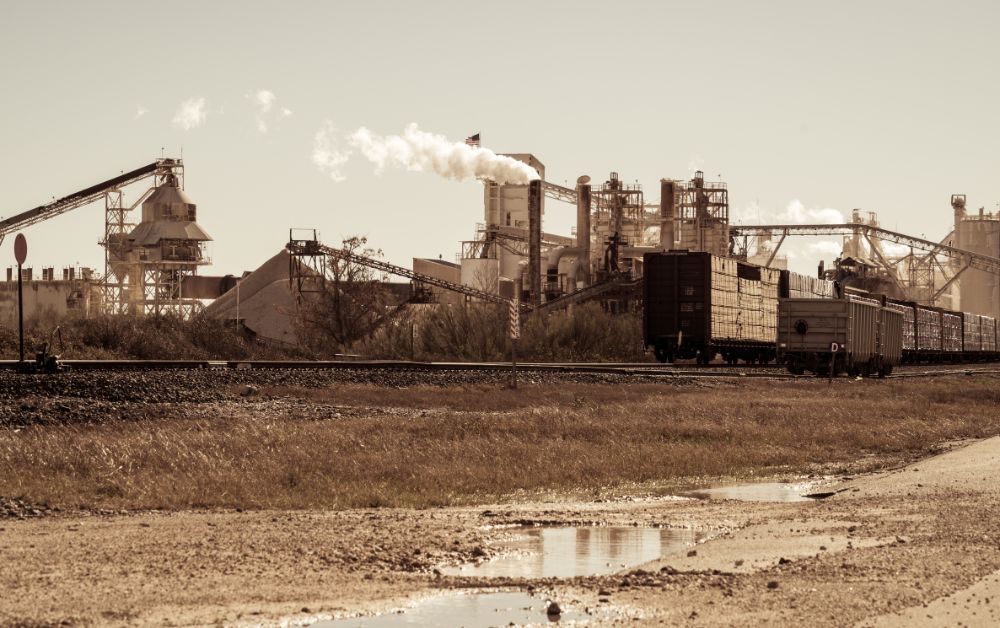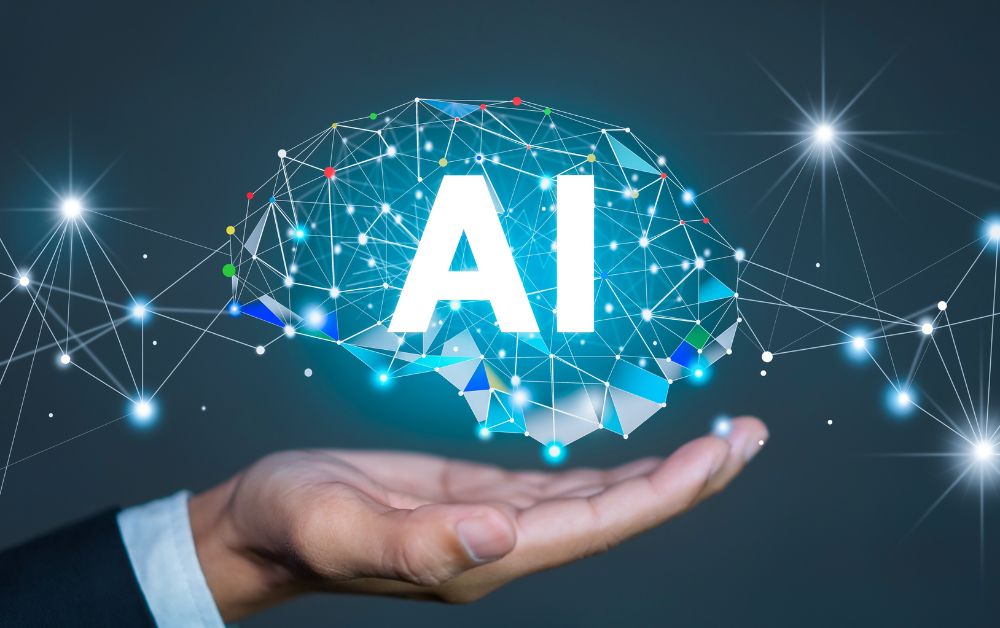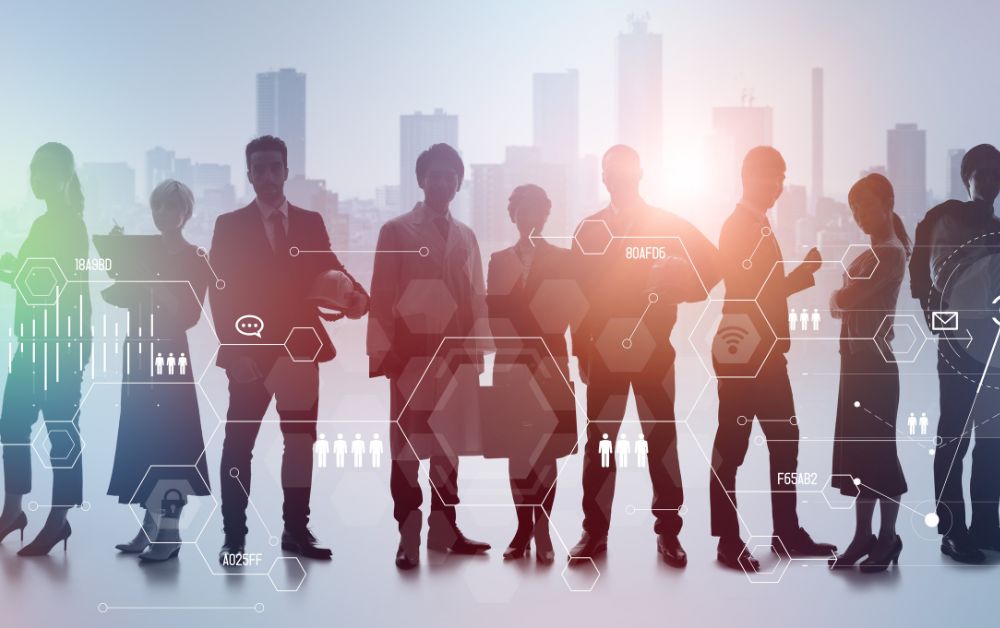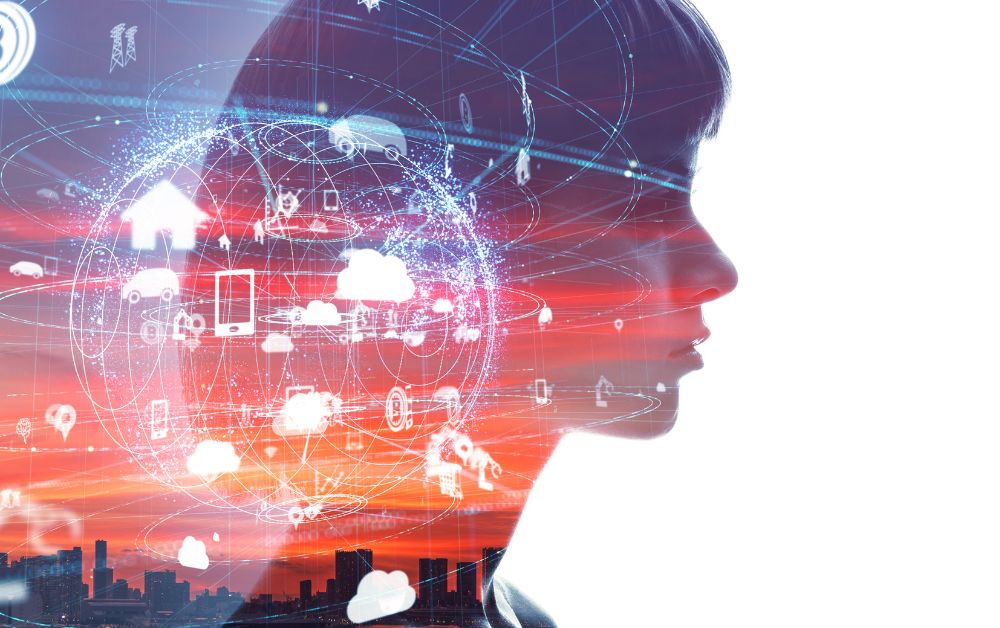Today’s insights are brought to you by my colleague and global futurist, Dean van Leeuwen.
What is a bionic organisation?
In 1958, retired US Air Force colonel and medical doctor Jack Steele coined the word “bionic”, a term blending “biology” and “electronic”, which later became popularised by the 1970s TV series, The Six Million Dollar Man and The Bionic Woman, both based on the novel Cyborg by Martin Caidin.
The stories all revolve around a central theme of humans gaining superhuman powers by augmenting their capabilities with mechanical implants. Today, with exponential advances in robotics, AI, and machine learning, being bionic is a reality. However, instead of superhumans, we are seeing the emergence of superhuman organisations.
In this article, we explore what a bionic organization is and how it will shape the future of work in the Fifth Industrial Revolution.
Winston Churchill said: “The farther backward you can look, the farther forward you can see”. So, let’s look back and explore what the first four industrial revolutions can teach us about what it means to be a bionic enterprise in the Fifth Industrial Revolution.
Every important exploration begins with a question. Ours is this: What exactly is the Fifth Industrial Revolution?
Why is it the Fifth, what are the first, second, third and fourth industrial revolutions for that matter? By answering this question you’ll discover why it’s important for your future.
The First Industrial Revolution starts in the mid-1700s, Thomas Newcomen invented the steam engine to pump water out of the Welsh coal mines. James Hargreaves invented the spinning jenny and these pivotal inventions allowed people to dig out more coal, and make more clothes respectively; only better, cheaper and faster.
Now these nascent technologies were awkward and unwieldy but as improvements took place, they start to show real promise. The combustion engine was an extension of the steam engine just using petrol and gas. It was much more sophisticated, powerful and reliable.

Now we move to the Second Industrial Revolution and this is where the real magic begins. The second industrial revolution is not about new technology, rather it’s about the application of existing technologies in such a dramatic fashion that the resulting new ways of working and new business models change the world.
Think of what Henry Ford did. He didn’t invent the motorcar. He didn’t even invent the production processes, what he did was he changed the way we work. The production line became a continuous production line. He doubled wages, creating the American middle class and made automobiles affordable for the masses.
The Wright Brothers took the combustion engine and using its power and reliability they cracked human flight. And then suddenly people went from the impossibility of flight to jet flight to travelling into space all within 50 years. This was a stratospheric change, and these things changed the world.
But, here’s the thing, what marks the Second Industrial Revolution is how people took the most promising and powerful innovations from First Industrial Revolution and used them in ingenious ways to completely change how people lived, worked and played.
This is the key to understanding the Second Industrial Revolution, it’s not new technologies. It’s changing the way we live because we have better, more powerful, more capable technologies. Remember that, you will need it in a few moments.
Now these once magical innovations become the new normal. Flying at 30,000 feet at nearly a thousand kilometres per hour sipping champagne is blasé and we forget how incredible it is. Planes, cars, electrical appliances all these things become part of everyday life. As Peter Drucker, the great management guru said: “Every few hundred years there occurs a sharp transformation. And the people born then cannot even imagine the world in which their parents lived.”
The Third Industrial Revolution started in the 1950s and gathered speed in the 60s and 70s as the world entered the era of the digital revolution. Here the business problem is data. Like the Welsh miners of the First Industrial Revolution whose mines were flooded with water, organisations in the Third Industrial Revolution are being flooded with information and the standout innovation is the computer.
Like early steam engines, the first computers and mainframes were awkward and unwieldy. In the early days, you could buy a computer for the size and price of your house. But these inventions improve rapidly and soon there are desktops, laptops, mobile devices, the internet, connectivity, automation, and all these technologies bring us into a digitally driven world.
So, if that’s the Third Industrial Revolution, then what’s the Fourth Industrial Revolution?
When we ask this question typically we hear: “It’s robotics, it’s AI, machine learning, its data analytics”. But these are all digital innovations from the Third Industrial Revolution.
The Fourth Industrial Revolution, like the Second Industrial Revolution, is about changing the way we live, work and play because we have better, more powerful and more capable technologies.

The Fourth Industrial Revolution, like the Second, is about taking the innovations from the previous revolution — today it’s technologies like the Internet of Things, 3D printers, smart devices, and AI (although AI feels new, it has been developed over the past 50 years) — and using the most promising ones to change the world.
We are witnessing a repeating cycle; can you see it? The first and third industrial revolutions were about efficiencies and effectiveness — doing the same things as before only using new inventions to do them faster, cheaper and better. The second and fourth industrial revolutions are about reimagining — taking the most promising technologies and completely changing the way the world works.
Now the Fourth Industrial Revolution was coined by the founder of the World Economic Forum, Klaus Schwab in 2015, and already people are talking about the Fifth Industrial Revolution, why?
Well, while previous revolutions generated economic growth, they were also hard on humans and hard on the environment. Consider the unprecedented pollution of the earth or the introduction of acute hardships for workers in living conditions, stress, discrimination and more.
The Fifth Industrial Revolution is a conscious rewiring to place the needs of human beings, the environment and society front and centre. The Fifth Industrial Revolution is about asking how can we build back better and use new technology innovations to make the planet and people’s lives better.
The Fifth Industrial Revolution is about reimagining how we live work and play by building prosperity for all stakeholders. The Fifth Industrial Revolution is where humans and machines combine for a better future. And the Fifth Industrial Revolution shapes the essence of the bionic organisation.
Building a bionic organisation is not about doing what we’ve been doing just cheaper, better and faster. Being a bionic organisation is not about simply automating the things that we have been doing for the last ten or twenty years. Neither is it about replicating what we do as a digital process or online app.
Being a bionic organisation is about imagining a new world dramatically different from our past. Being a bionic organisation is about harnessing the most promising technologies in a manner that enables the profits and digitally enabled progress enjoyed in the fourth industrial revolution while putting front and centre the prosperity of the planet and people’s lives. In the bionic organisation terms such as “more efficient” or “more productive”, are complemented with terms such as purpose, inclusivity, civility, and humanism.

In Summary:
Building a bionic organisation is not about:
- Replicating what you’ve been doing but cheaper, better, and faster.
- Replacing people by automating the things you do.
- Replicating what you do as a digital process or online app.
Building a bionic organisation is about:
- Reimagining a world that is dramatically different from the past.
- Complementing the profit, more efficient and productive agenda, with terms such as purpose, inclusivity, civility, and humanism.
- Harnessing the best of human capabilities and augmenting these with AI, machine learning, robotics and other powerful breakthrough technologies.
- Focusing on how to create superhuman performance.
- Discovering new ways to build a better working world for all stakeholders.
Great opportunities exist for leaders who are tuned towards change.
Please connect if you’d like to start a conversation with our team to help you and your team to keep your eye on the future.
About the author of today’s Tuesday Tip – Dean van Leeuwan
Dean van Leeuwen is the co-founder of TomorrowToday Consulting – a futurist consultancy working with leading organisations around the world. He is an expert on global trends, innovation, and strategic business transformation.
You can access Dean’s latest research on ‘Closing the Innovation Gap – The 7 strategic and cultural essentials that separate successful large-company innovator’s here or chat with us about our ‘Full blown innovation’ keynote presentation.


